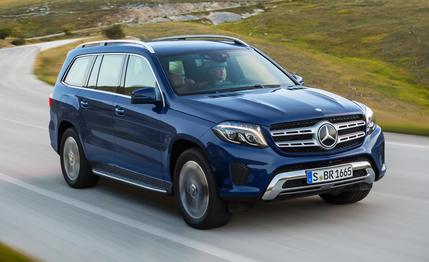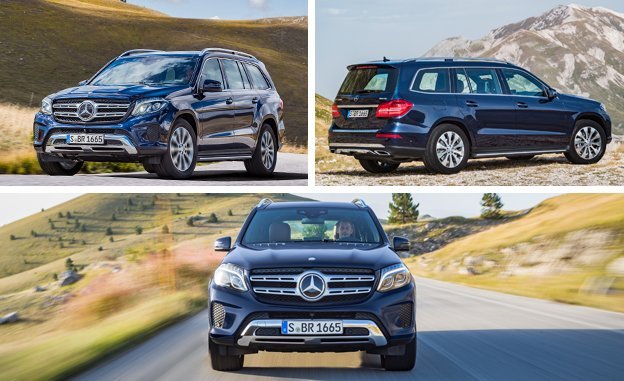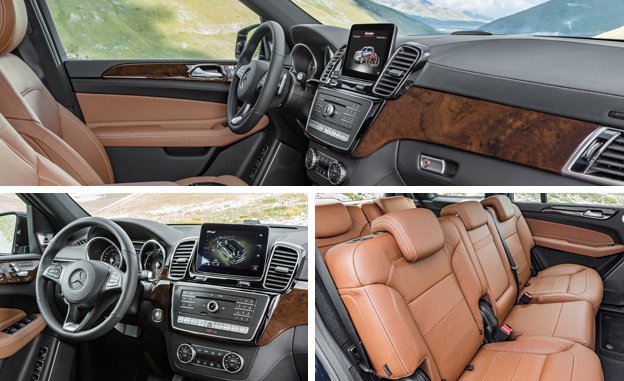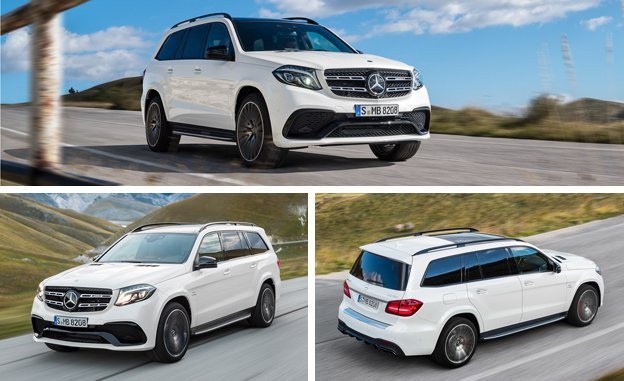
 First Drive Review
First Drive Review
Changing your name is a right pain in the, well, you know. There’s the DMV, Social Security, and the IRS, among other government agencies, to deal with. Get through all of those and you still have to convince your friends to use the new moniker. While Mercedes didn’t have to deal with those government offices to change many of its vehicles’ names in its recent nomenclature shift, its friends—also known as its paying customers—do have a few new nameplates to get used to. The GLS-class is one of them.
Thankfully, Benz’s naming changes largely make sense, unlike those of Infiniti. (We’re supposed to be the experts and we still use the Japanese luxury brand’s old designations to refer to its vehicles.) Benz’s logic comes courtesy of aligning its SUVs with its core sedan lineup, so the GLK became the GLC (C-class), the ML became the GLE (E-class), and the GL became this model, the GLS (S-class). (The A-class-aligned GLA-class launched under the new naming convention.)


The new GLS arrives in American dealerships in March, but don’t fret if you can’t tell much of a difference. Exterior changes from the GL-class it replaces are only slightly more obvious than the extra letter in its badge, and it’s still the big ol’ Benz capable of hauling seven people in three rows of seating or as much as 94 cubic feet of cargo. A slightly wider grille opening pushes the revised headlights toward the outer edges of the nose, while new LED taillights and a reworked rear bumper highlight the changes out back. Inside, the restyled interior now sports the company’s COMAND touchpad that’s proliferating across the Mercedes lineup. (More details on the changes are available here.)
The top-spec non-AMG model is the GLS550, and according to one Mercedes display we saw at the launch event, it is “lavishly motorized” thanks to a 4.7-liter twin-turbo V-8 putting out 449 horsepower and 516 lb-ft of torque. From behind the wheel, this engine is sufficient in the same way that a gas-powered blender is. Yes, it’s fun, but you rarely have a chance to use the available power. The lower-cost V-6s once again are the sweet spots of the lineup, and the diesel-powered GLS350d even gets a small power bump over its predecessor.
The biggest changes concern the big SUV’s mechanicals. All three non-AMG models now come with a new nine-speed automatic, which sports a wide, 9.17:1 ratio spread. In most driving modes (which number five or six depending on equipment), the transmission starts in second gear for smooth, cushy throttle tip-in; only Sport mode engages the shortest ratio. In the interest of efficiency, Benz engineers spent the last five years optimizing the four-planetary-gearset gearbox. It uses two pumps to generate the hydraulic pressure required for operation, with a mechanical pump working while the engine is turning and a second electric pump adding pressure when needed. The latter also allows for quick re-ignition during engine stop-start operation.


In either of the gasoline-fueled models, the so-called 9G-tronic transmission goes unnoticed—but in the best way possible. It never hunts for gears, and turbo lag is kept to a minimum. In the diesel, however, the transmission always seems as if it’s in one gear higher than it should be, spinning the long-stroke V-6 at near idle. At that engine speed, it feels like full boost—and therefore full power—must pass a TSA security check before arriving. We loved the diesel GL-classes of yore not only because they were the entry point to the range, but also offered copious torque to make up for their lower horsepower figures. After our Alpine drive, however, we’d say it’s the 362-hp twin-turbo V-6 of the GLS450 that seems to sit most squarely at the intersection of performance and value.
The GLS’s interior is quiet and serene, and the same can be said of driver feedback from the steering wheel and pedals. Like the GL450 of before, a soft brake pedal puts some unnecessary guesswork into deceleration and the steering wheel feels disconnected to what’s happening at the road. But this is not to slam the vehicle, nor is it to say that, on their own, these are glaring errors among three-row luxury SUVs. Coupling the two together, however, makes us want for a little more tactility.
Pricing isn’t finalized but we’re expecting 2017 GLS pricing to mirror the outgoing GL’s, with the GLS350 diesel and GLS450 starting at less than $70,000. You should not, however, expect to see many V-6 GLSs on dealer lots wearing stickers for much below $90K, which is how much these wagons usually cost once entertainment screens, full-leather lining, dynamic anti-roll bars, two-speed transfer cases, and other big-ticket items are selected. The GLS550 should begin around $93,000, so it’s already in its own stratosphere.


Speaking of other stratospheres, we haven’t forgotten about the Mercedes-AMG GLS63. The 577-hp (up 27 from the GL63) hot rod is the most like its predecessor on account of the fact that it carries over its older seven-speed automatic. Mercedes didn’t have a drive-worthy example ready for us to sample, so we will have to wait until springtime to confirm that it can still rocket to 60 mph in less than five seconds.
All in all, it seems the most significant new thing about the GLS is its name—it drives as well, totes as much, and looks as upscale as the old GL-class. And that’s fine with us.